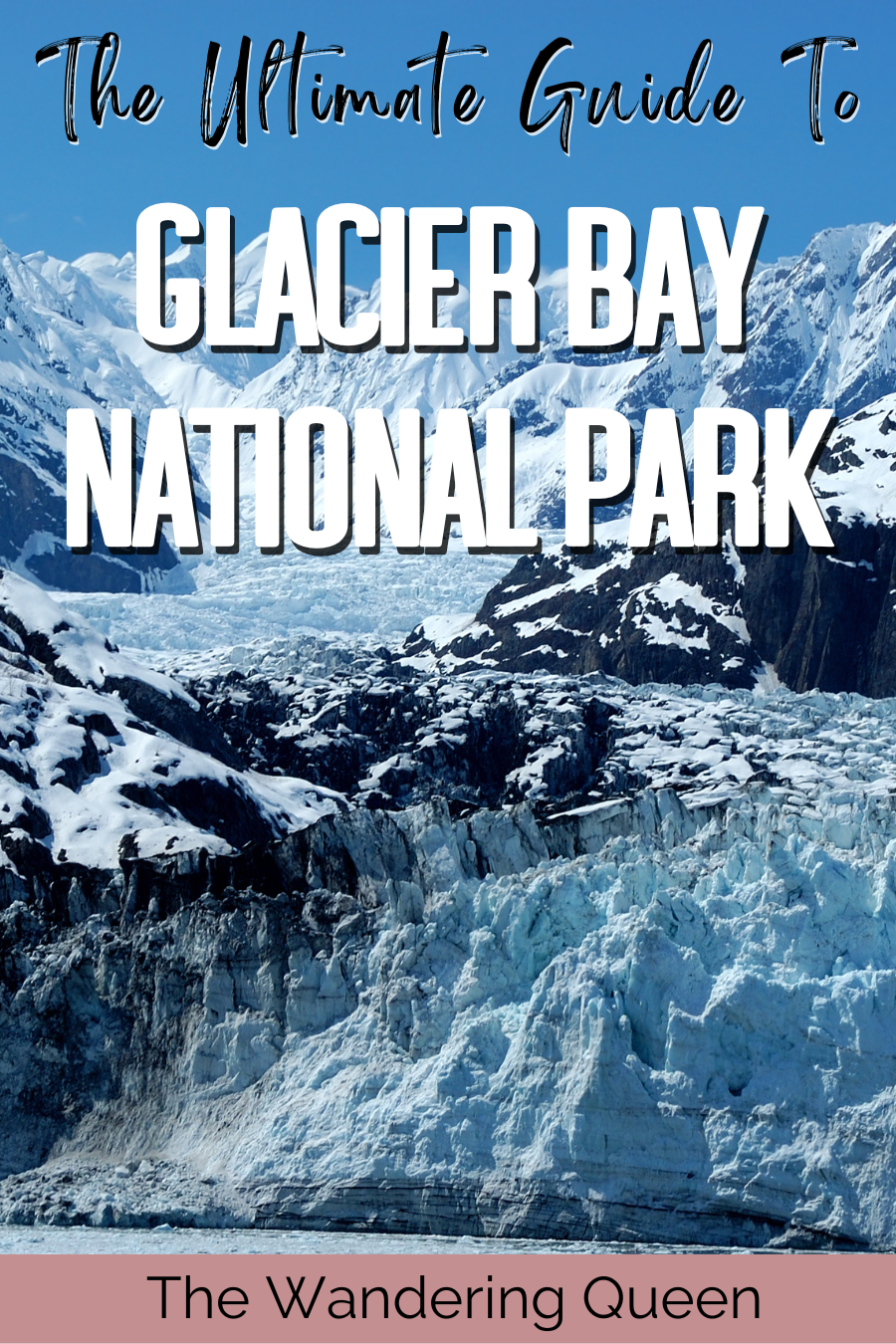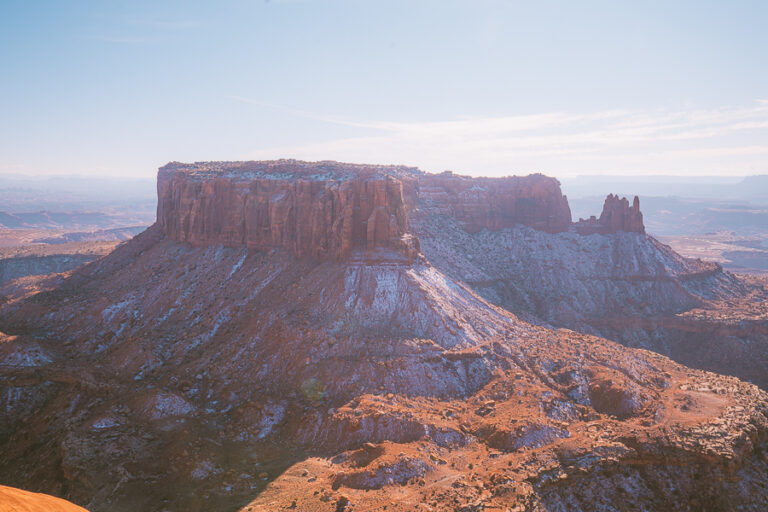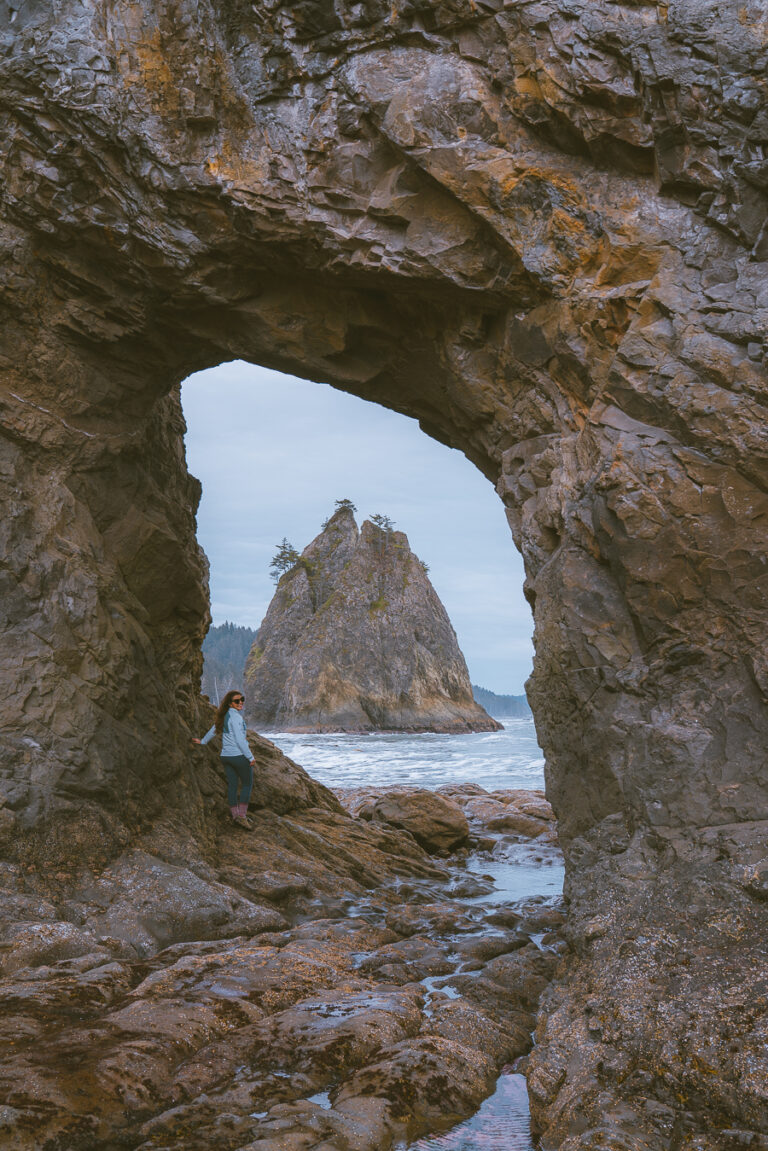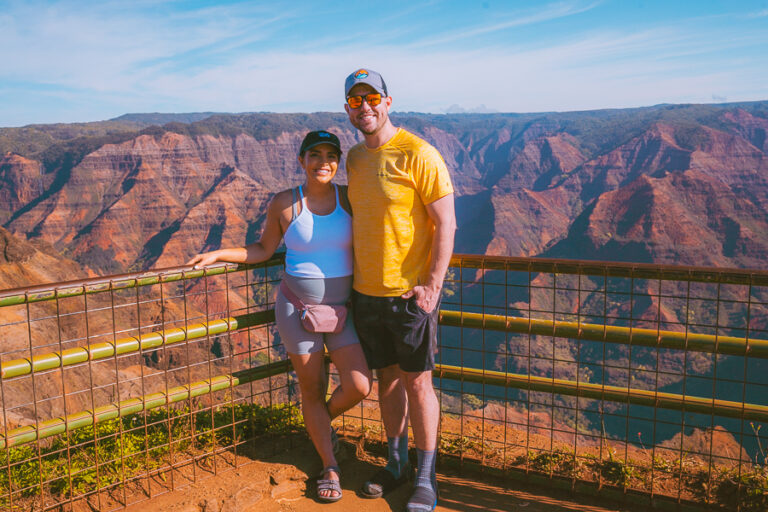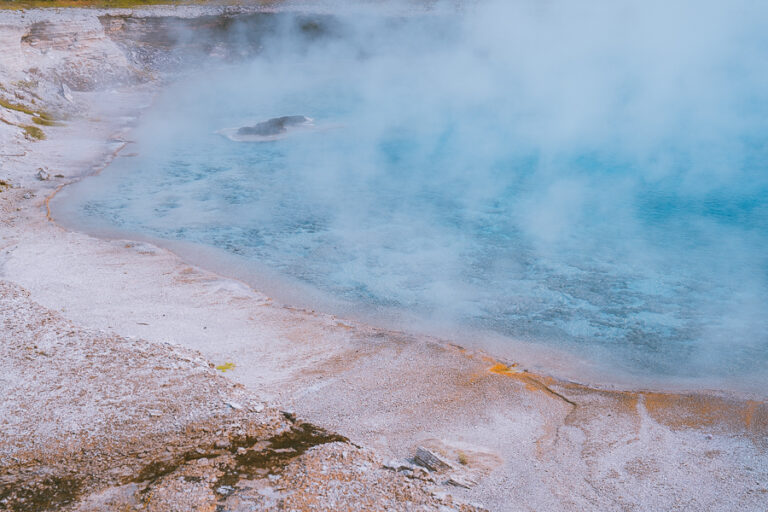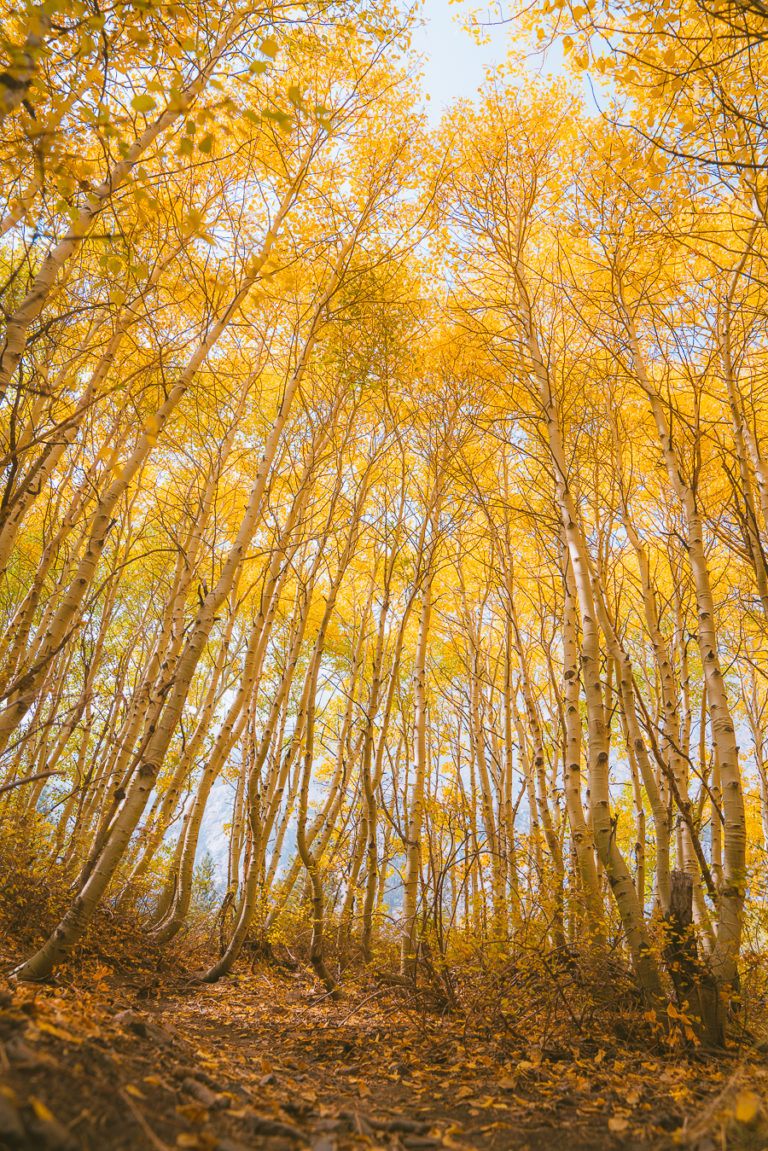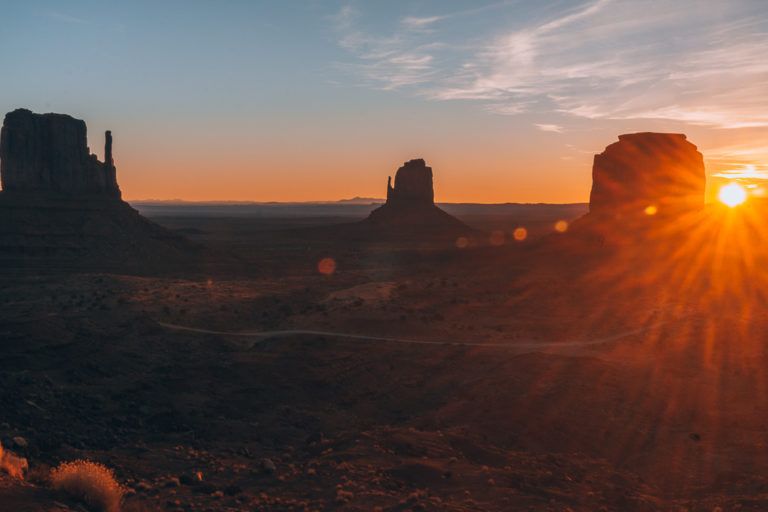How to Visit Glacier Bay National Park, Alaska + Things to Do
Characterized by tidewater glaciers, magical fjords, and lots of marine wildlife, Glacier Bay National Park offers stunning natural beauty, making it a must-visit for nature enthusiasts. Established as a national park in 1980, the preserve draws over 700,000 annual visitors.
But how do you get to Glacier Bay National Park? You’ve landed in the right place. This guide unpacks the best ways to visit the park, as well as what to see and do while there. You’ll also find tips to plan a magical trip, whether solo, as a group, or on an Alaska cruise.
So, without further ado, let’s dive in on How to Visit Glacier Bay National Park.
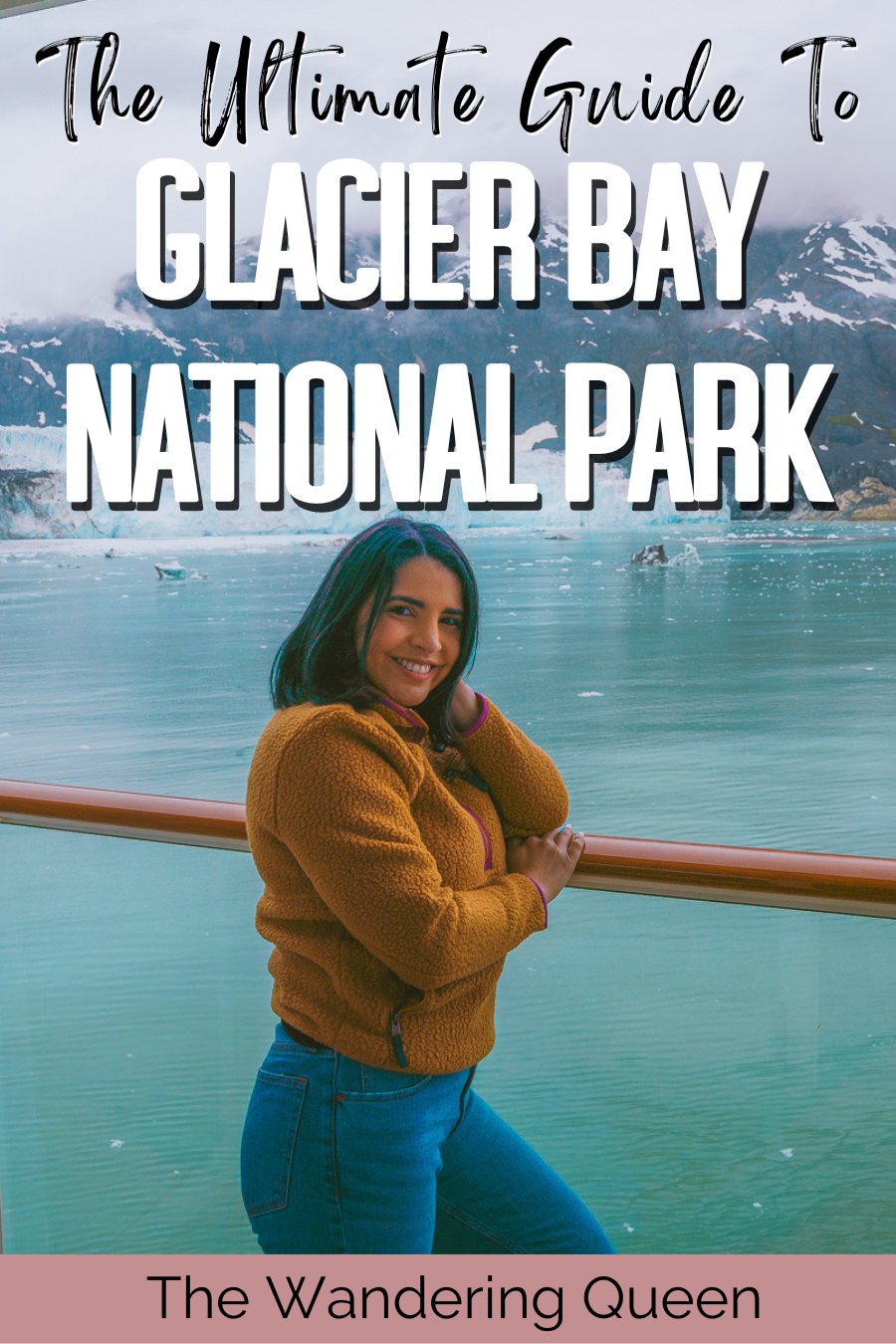
Disclosure: This post contains affiliate links. If you click one of them, I may receive a small commission (for which I am very grateful for) at no extra cost to you.
Glacier Bay National Park
Related Posts
How to Get to Glacier Bay National Park

First things first: where is Glacier Bay National Park? The preserve is located in Southeast Alaska, over 100 miles northwest of Juneau. There are no roads leading to Glacier Bay, so a road trip is out of the question. But luckily, you have other options to get to this national park.
Norwegian Cruise Line
Cruises are one of the best methods of visiting Glacier Bay, which I learned during my recent trip with Norwegian Cruise Line. You can take the 7-day Norwegian Cruise Line boat tour from Seattle, Washington, Vancouver, or British Columbia, depending on where you are.
The National Park Service offers a map of the typical route taken by cruise ships, which will be beneficial to familiarize yourself with. At some point, park rangers will board the ship, bringing along souvenirs that you can buy as mementos or gifts for your loved one at home.

Top Tip: While I opted for this 7-day cruise, there are plenty of other options with different trip lengths, ensuring the cruise can cater to just about every budget.
Plane via Alaska Airlines or Alaska Seaplanes
Another great (and fast) way to get to Glacier Bay is via flight. The closest airport to the park is Gustavus Airport (GST), located in the small town of Gustavus. If you’re looking to land at a bigger airport, then Juneau International Airport (JNU) is your best bet.
Keep in mind that you’ll have to take a second flight to Gustavus from Juneau International Airport anyway. Alaska Airlines provides flights to Gustavus, the gateway to Glacier Bay, while Alaska Seaplanes offers a more adventurous journey with scenic aerial views.
To get to the national park itself, you’ll need to take a small tour boat or seaplane from Bartlett Cove.
Scheduled Ferry
You can also get to Glacier Bay via a scheduled ferry. Book your reservation with the Alaska Marine Highway System (AMHS); do it well in advance of you’re boarding with a vehicle. The service offers scheduled ferries from Juneau to Gustavus about two days a week.
Expect the trip to take about 4-6 hours, but don’t worry, the route is scenic all the way through. This scheduled ferry service only goes as far as Gustavus, so to visit Glacier Bay National Park, you’ll need to take a boat tour from Bartlett Cove or charter a small plane.
Flightseeing Tour

A unique way to see Glacier Bay is via a flightseeing tour. These tours provide an aerial perspective of the park’s glaciers, mountains, and wildlife, offering breathtaking views that are not accessible by land or boat. You’ll also get the option to land on the glaciers or beaches.
Booking a flightseeing tour is an excellent way to see the park if you don’t have enough time or patience for a leisurely Glacier Bay day cruise. Flightseeing tours are also perfect for adventure seekers and photography enthusiasts looking for a once-in-a-lifetime experience.
Download my free Outdoor Photography Guide
Things to Do in Glacier Bay National Park and Preserve, Alaska

Plenty of Glacier Bay activities await, from admiring massive tidewater glaciers and marine wildlife from your cruise ship to exploring the designated wilderness through hiking trails. Here are some of the best things to see and do in Glacier Bay National Park and Preserve.
Stop by the Glacier Bay National Park Visitor Center

This is an essential first stop for many park visitors, especially first-timers. The visitor center is located on the second floor of Glacier Bay Lodge in Bartlett Cove. It offers educational and interpretive exhibits, informational brochures at the staffed desk, and a bookstore.
In the summer, the visitor center is open daily from 10:00 AM to 5:30 PM. You’ll find helpful park rangers who can answer questions and provide recommendations; they also host programs.

Note: Bartlett Cove serves as the park’s headquarters, offering accommodation (lodge and campground), a restaurant, a tour boat dock, and kayak rentals.
Explore the Glacier Bay’s Glaciers

It’s impossible to visit this national park and not marvel at its prized possessions — glaciers! Admire these Glacier Bay gems from a cruise ship, a tour boat, or even a small plane flight.
Margerie Glacier
This is one of the park’s most stunning tidewater glaciers, known for its striking blue ice and frequent calving. Its towering cliffs often shed snow into the bay, creating dramatic ice peaks at the sea edge. Margerie Glacier is very active, with ice flowing at about 2,000 feet per year.
Johns Hopkins Glacier
This 12-mile-long glacier is remote and offers the utmost serenity. Set in a picturesque fjord and surrounded by towering peaks, it’s formed by tributary glaciers and rock debris scraped from the peaks. That’s why the glacier has these stunning black and white racing stripes.
Lamplugh Glacier
Known for its vibrant blue color, this 8-mile-long glacier is a photographer’s dream. Make sure to visit on a clear day to see the glacier’s unique ice formations in all their glory. The glacier also features intricate patterns and deep crevasses, adding to its natural beauty.
Reid Glacier
Measuring over 10 miles long, this glacier offers magical scenes of crevasses, rocks, and ice surrounded by breathtaking peaks. It’s located adjacent to Lamplugh Glacier, so they are both fed by the Brady Icefield. It’s a slow-moving glacier, only receding 30-50 feet per year.
Carroll Glacier
Starting at the US-Canada border, this 15-mile-long glacier is known for its scenic beauty and protruding ice formations. One of its standout features is its location in a less-visited part of the park, ensuring you can capture and admire this glacial landmark without disturbance.
Rendu Glacier
This is another glacier that sits close to the border, so it’s best seen via small plane flights. Its remote location offers the park’s untouched beauty and spectacular ice formations. The glacier is quite dynamic, transforming into an ice patch in winter and a fjord in the summer.
Grand Pacific Glacier
This is one of the largest glaciers in the park, notable for its dark, debris-covered ice. Often credited with carving Glacier Bay, this 20-mile-long glacier features a moraine-covered surface, adding to its allure. It extends into Canada, making it an international glacier.
Hike the Trails around Bartlett Cove
You might think hiking is not a popular activity in Glacier Bay, as the national park is mostly covered in ice, but you’d be mistaken. There are a few popular hiking trails in the Bartlett Cove Area that offer a perfect way to immerse yourself in the park’s natural landscape.
From the dense forests to the idyllic shorelines, here are the must-do hikes in Glacier Bay:
- Forest Trail: This one-mile loop is short and sweet, taking you through a lush Sitka spruce and towering hemlock trees. Trekking the Forest Trail is a great way to immerse yourself in the forest environment, spot diverse plant species, and listen to enchanting bird calls.
- Bartlett River Trail: This is a scenic trail following the Bartlett River to a picturesque lagoon. The four-mile (round-trip) hike offers beautiful river views and potential wildlife sightings, so keep your eyes peeled for foraging critters. The trail also gives access to prime fishing spots.
- Bartlett Lake Trail: This is a more challenging trail leading to the serene Bartlett Lake. The eight-mile (round-trip) trek takes you up the moraine for a peaceful setting away from the crowds. Besides solitude, the lake area is rich in birdlife, making it great for birdwatching.
>>>Buy Glacier Bay Map Here<<<
Go Sea Kayaking

Do you want a closer look at the glaciers? Then sea kayaking in Glacier Bay is the best activity for you. It offers a unique and intimate way to explore the park’s deep-blue waters while marveling at Glacier Bay’s mountains.
Paddling close to the shoreline allows you to get up-close views of the glaciers, spot wildlife like mountain goats, and enjoy the stunning alpine landscapes. This is an adventurous activity perfect if you’re looking to experience the park from a different perspective.

Tip: Book a guided kayaking day tour and enjoy having an expert right there with you.
Enjoy Wildlife Viewing
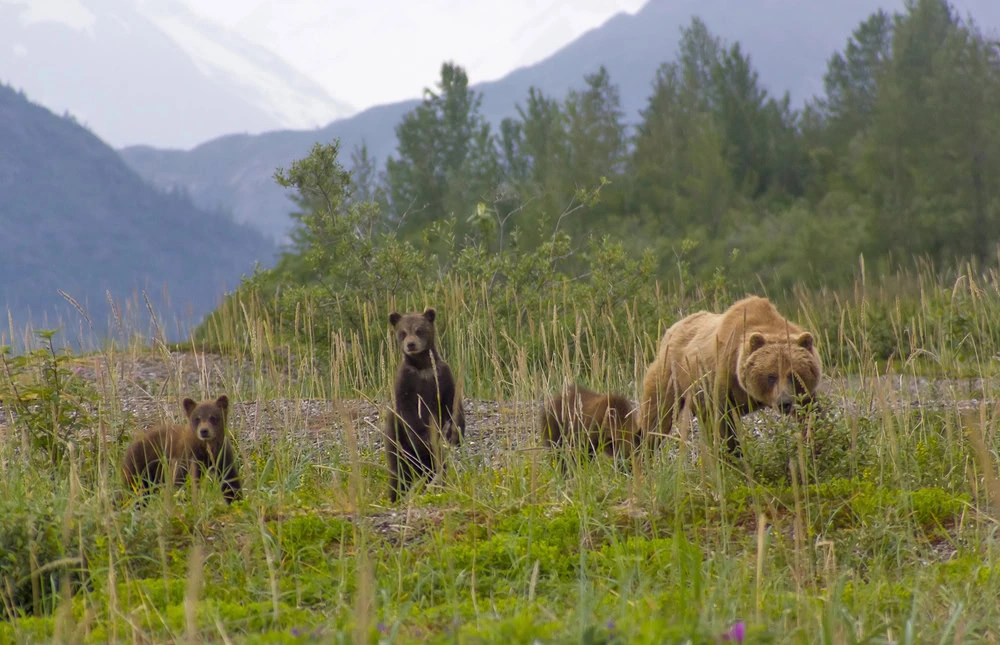
When it comes to spotting wildlife, you surely won’t have any troubles at Glacier Bay. From humpback whales and steller sea lions to harbor seals with their pups and sea otters swimming about, this national park is a haven for wildlife viewing.
You just have to time your visit by season to see certain wildlife. In the summer season, the park’s most iconic residents are out and about—humpback whales. So, this time of year is great for whale watching. You may also spot killer whales, sea lions, and harbor porpoises.
Spring welcomes black bears from hibernation, mountain goats move to lower elevations, and migrating fish return to the streams to spawn. Fall is also a great season to spot wildlife in Glacier Bay. Migrating birds head south while other animals start preparing for winter.
Speaking of winter, while this season isn’t the most popular to spot wildlife, it’s ideal for finding animal tracks in the snow, from coyotes to wolves, moose, and Sitka deer.
Go Birdwatching
Home to over 280 bird species, Glacier Bay is an excellent place for birdwatching. The park’s high diversity and abundance of birdlife are due to its various breeding habitats, abundant food resources, and the low number of natural predators.
So, when and where can you see these winged critters? While each species has its own seasonal patterns, generally, May to mid-September is a fantastic time for birdwatching.
Bird species like seabirds are spotted on the cliffs and rocky island shores. Keep your eyes peeled for colonies of gulls, puffins, and guillemots. The forest and beach meadows also attract birds like thrushes and bald eagles, as well as shorebirds such as waterfowl.
Claim your FREE Hiking Checklist
Ready to start hiking? Grab my free hiking checklist and never forget anything at home!
Try Your Hand at Sports Fishing
Glacier Bay National Park’s abundance isn’t only limited to its impressive tidewater glaciers, birds, and other wildlife, but it also extends to fish. The bay offers anglers the opportunity to catch a variety of fish, including salmon, halibut, and trout.
You’ll have the option to fish in salt and freshwater estuaries. Saltwater is where most anglers target halibut, but Chinook salmon is also sought-after. In freshwater rivers, streams, and lakes, you can catch salmon as well as sea-run steelhead and cutthroat trout.

Note: Read the sport fishing regulations on the National Park Service website for guidance.
Enjoy Lunch at Glacier Bay Lodge
Tucked along the lush shore of Bartlett Cove, Glacier Bay Lodge is the only lodging that lies within the park. It offers guest rooms with excellent wilderness views, daily boat tours, hiking trails, kayaking and fishing opportunities, and a restaurant to get fuel for the body.
Lunch is served between 12:00 PM and 3:00 PM. You can enjoy it in the dining room or out on the deck, where you can admire stunning views of the park while you eat. You’ll have a variety of options to choose from, from fresh salads to fish and chips and classic Glacier burgers.
Go Camping at Bartlett Cove Campground
Camping in Glacier Bay allows visitors to fully immerse themselves in the park’s natural beauty. The park offers both designated campsites and backcountry camping options for more adventurous souls. If that’s not for you, then the campground at Bartlett Cove is.
This is a free walk-in campground set in a scenic rainforest along the shore. Camping operates on a first-come, first-served basis, so be sure to reserve your spot early. Get a permit for this campground at the park’s visitor center (or Visitor Information Station – VIS).
Explore the Huna Tribal House
Visit the Huna Tribal House, where you’ll learn more about the clans that once called this palace home. Located along the Tlingit Trail, the house commemorates the Indigenous clans that once occupied the shores of Bartlett Cove, which is now home to the park headquarters.
Rangers recommend that you read the informative exhibits around the house and admire its totems and paintings. Then, head out to marvel at the Tlingit tree carvings and traditional dugout canoe. In summer, special programs and presentations are at times offered here.
Where to Stay When You Visit Glacier Bay

Now that you know there’s a jam-packed itinerary waiting for you, it’s time to look for a place to stay if you’re visiting on a cruise ship. Whether you’re looking to stay within the national park or in a nearby town, here are suitable options for you to consider and what they offer.
- Glacier Bay Lodge — Set among towering Sitka spruce trees, this lodge offers cozy guest rooms with views ideal for wildlife watching and even stargazing. You’ll have a private bathroom and access to amenities like a restaurant, boat dock, and hiking trails.
- Glacier Bay Country Inn — Situated on acres of lush private land, this lodge in Gustavus offers wooden cabins equipped with comfy beds, TVs, and porches with great views. The inn has a restaurant for you to enjoy, serving hearty food, from seafood to sweet baked treats.
- Glacier Bay’s Bear Track Inn — Located a 20-minute drive from Gustavus Airport, this inn offers a rustic cabin stay in the wilderness. The lodge has spacious rooms with meadow or water views, amenities like fire pits and Wi-Fi, it offers tours, a game room, and a restaurant.
- Juneau Hotel — Located about 12 minutes from the airport, this 3-star hotel offers all the mod-cons, from free Wi-Fi to tea and coffee makers in each room. The hotel has spacious family rooms, making it a great accommodation option for people traveling in a large group.
- The Driftwood Lodge — Situated adjacent to the Alaska State Museum, this star-rated lodge offers a pleasant stay in the heart of Juneau. You’ll enjoy cozy beds and a full kitchenette. If you want something different, head downstairs for a bite at the on-site café.

Note: If you join a cruise, you won’t need to worry about organising accommodation.
Tips for Visiting Glacier Bay National Park
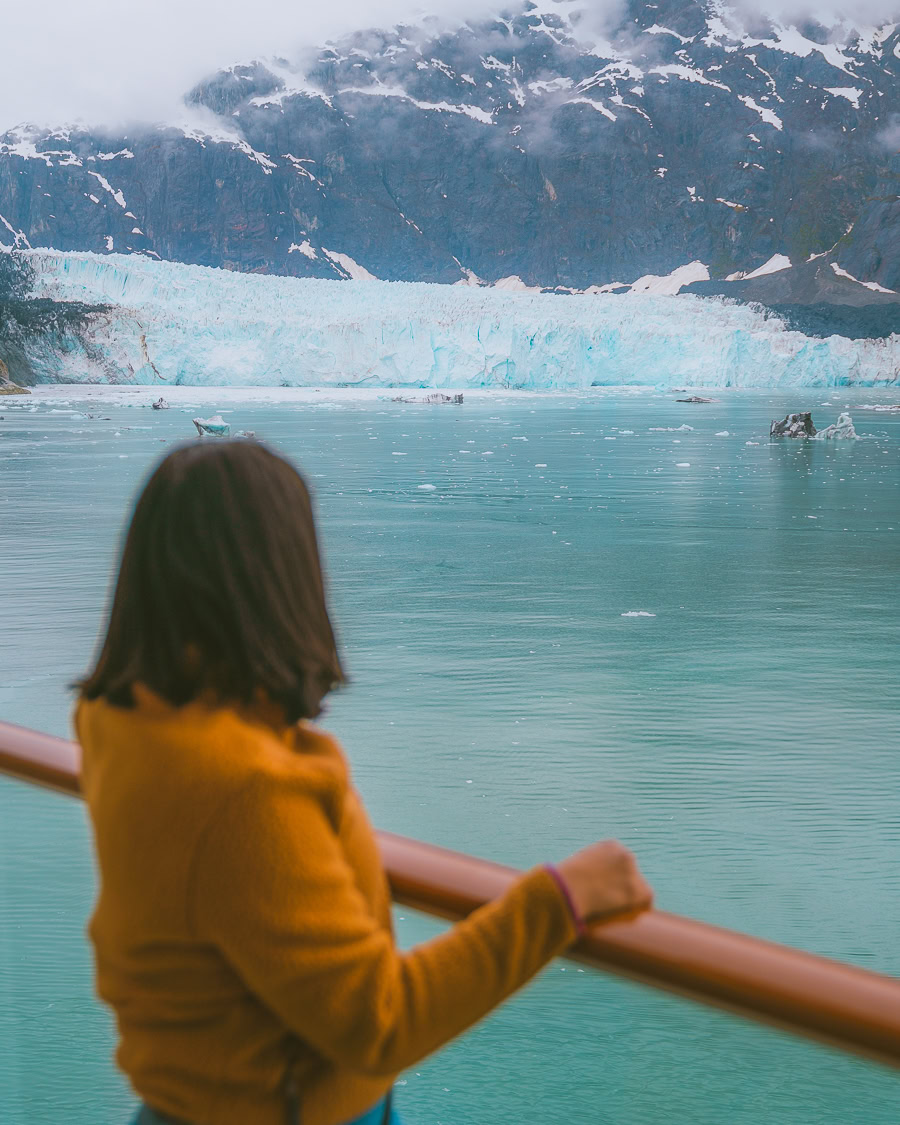
Make the most of your trip to Glacier Bay with these top tips for an unforgettable experience:
- Plan Ahead: Book your Alaska cruise, ferry, or flight and accommodation well in advance, especially during peak season. Visiting via a cruise ship eliminates the need to book extra transportation and a place to stay, so it’s highly recommended.
- Dress in Layers: Weather can change quickly, so be prepared for varying conditions. Bring long-sleeved shirts, long pants, and accessories such as gloves, beanies, and scarves. These come in handy no matter which season you visit.
- Stay Safe: Be aware of wildlife and follow park guidelines to ensure a safe visit.
- Pack Essentials: Bring necessary gear, such as waterproof clothing, sturdy hiking boots, a refillable water bottle, a day backpack, and binoculars for spotting animals.
- Respect Nature: Follow Leave No Trace principles to help preserve the park’s pristine environment. This also helps you avoid unwanted encounters with bears.
- Bring a Good Camera: The park offers incredible photo opportunities, so it’s highly recommended to bring a quality camera or smartphone with good photo capabilities to capture the park’s stunning landscapes and wildlife.
- Stay Hydrated and Bring Snacks: Carry enough water and snacks, especially if you plan on hiking or kayaking. There are limited facilities within the park, so it’s essential to be self-sufficient. This is where your day backpack comes in handy.
- Attend Ranger Programs: Participate in ranger-led programs, presentations, and talks to gain deeper insights into the park’s natural and cultural history. These programs add to your visit and provide valuable information about the area.
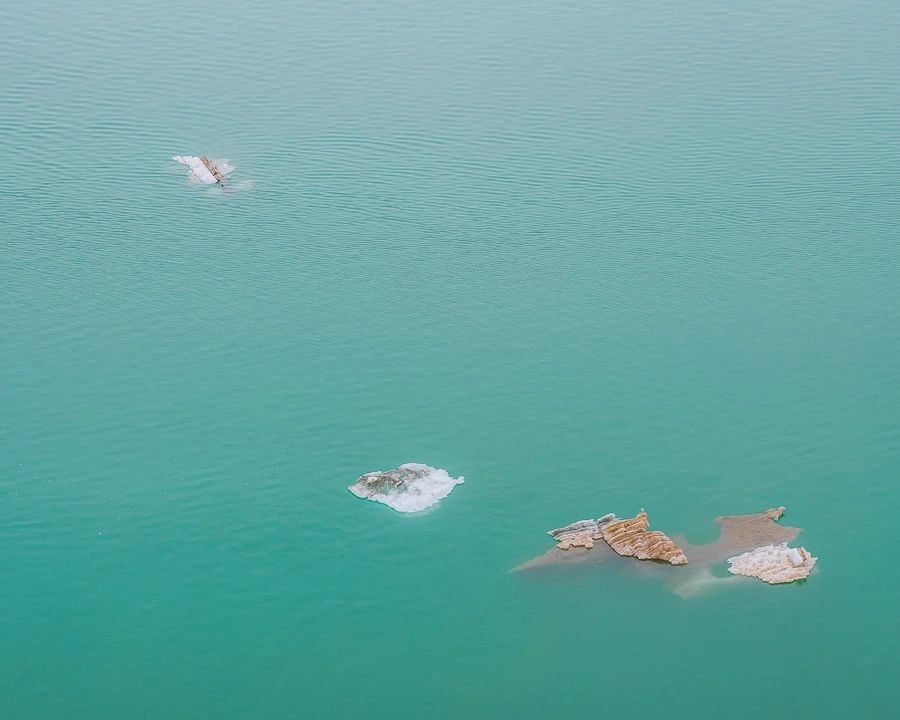
How to Visit Glacier Bay National Park | FAQs

Getting to Glacier Bay is pretty straightforward, but you may still have some queries. Here are some of the most commonly asked questions about visiting the park and their answers:
What Is the Best Time to Visit Glacier Bay, Alaska?
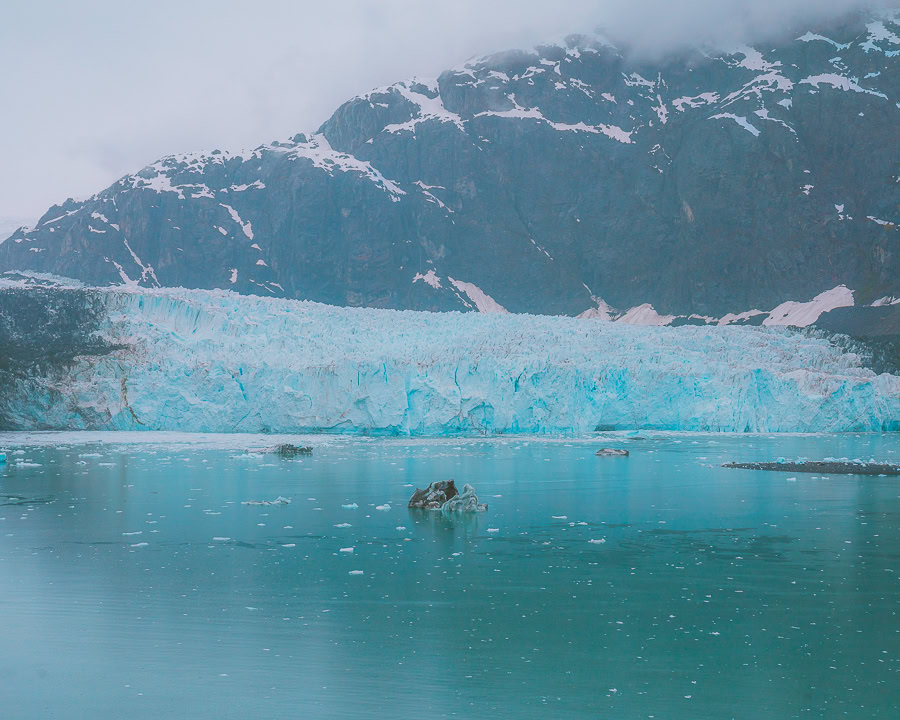
This national park is open year-round, but resources are extremely limited depending on the time of your visit. The main tourist season runs from early May to late September, peaking in July. During this time, the weather is milder, and most park facilities and services are open. These months also offer the best opportunities for wildlife viewing and outdoor activities.
How Many Days Do I Need in Glacier Bay National Park?
Since the national park is so vast, a visit of 3-5 days is ideal to fully experience it. This allows you enough time to explore the glaciers, participate in activities like kayaking, hiking, camping, birdwatching, and enjoy wildlife viewing without feeling rushed.
How Much Does It Cost to Go to Glacier Bay National Park?
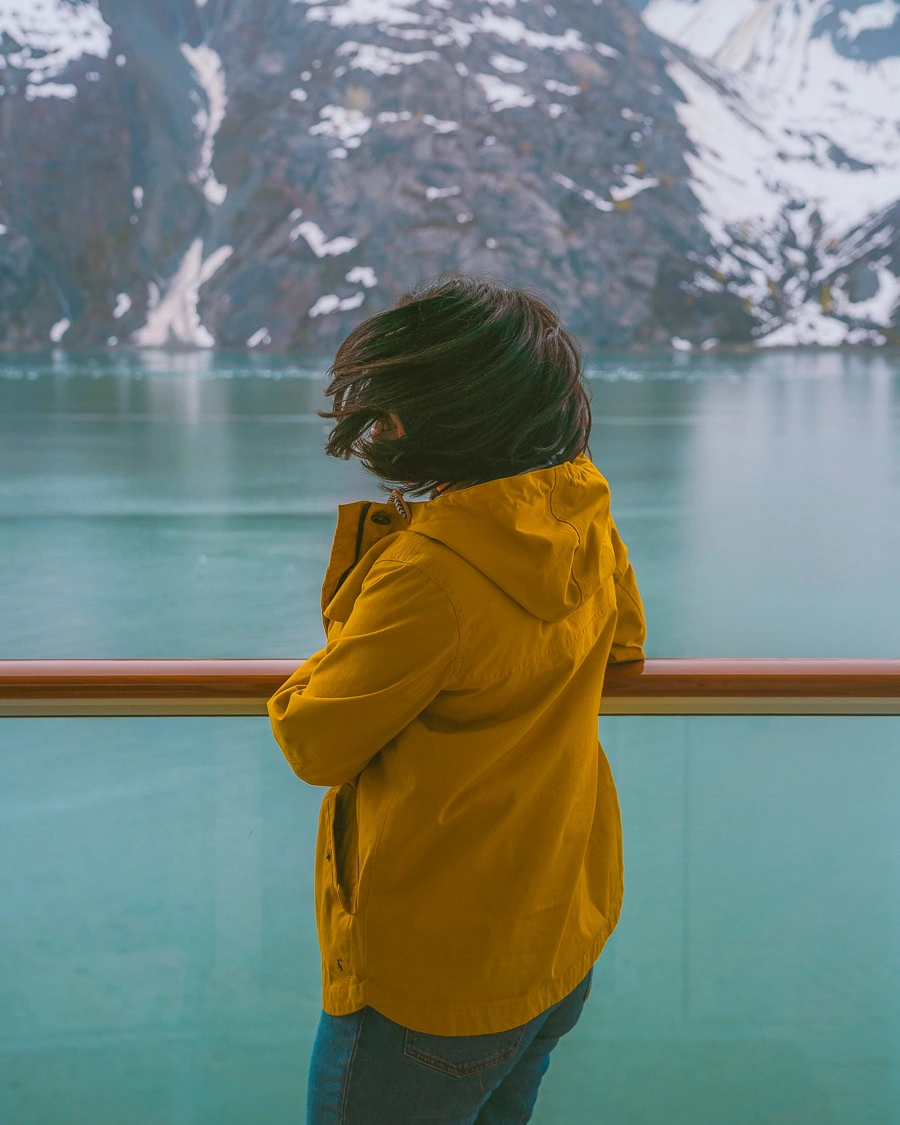
You’ll be happy to know that the park does not charge any entrance fees. However, the cost of the trip will vary depending on your travel expenses, lodging, and any tours or activities you choose to participate in.

Note: This is why cruises are so popular, as all the logistics are covered in one price, making visiting the park a much easier experience.
Is Glacier Bay Worth It?
Absolutely, Glacier Bay is worth it for anyone who loves nature, adventure, and breathtaking glacial landscapes. The park offers amazing opportunities to see massive glaciers, diverse wildlife, and stunning scenery. Most visitors use cruise ships to explore the Glacier Bay area.
Wrapping Up How to Visit Glacier Bay National Park

Visiting Glacier Bay National Park is a truly remarkable experience. It offers some of the most stunning natural beauty in Alaska. The park’s diverse wildlife, including the mighty humpback whale, black bears, antelopes, and numerous bird species, adds to its allure.
Getting there is straightforward. You can visit the park via ferry, small plane, or boat tour. The choice is yours. Activities abound, whether you prefer taking in the majestic sights from a cruise ship, exploring the serene waters by kayak, or hiking through lush, pristine forests.
Whether you’re a nature enthusiast, an adventure seeker, or someone simply looking for tranquility, Glacier Bay promises unforgettable memories amid Alaska’s natural wonders.
Next Read: US National Park Checklist 2024 | List of USA Parks By State

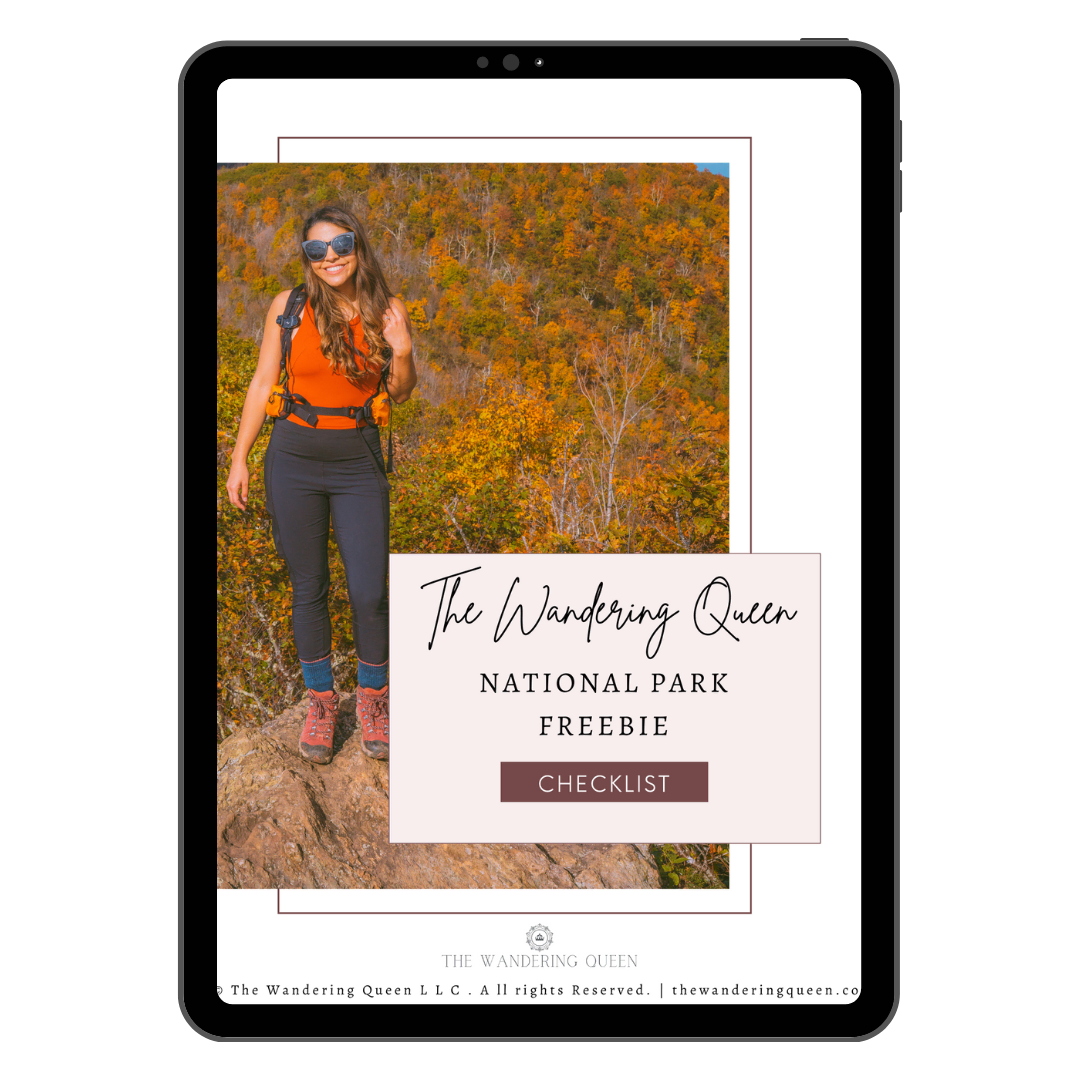
Get my free National Park Checklist
When you join the newsletter!
Pin For Later: How to Visit Glacier Bay National Park
